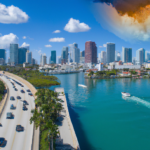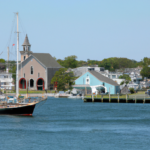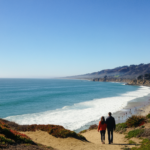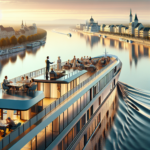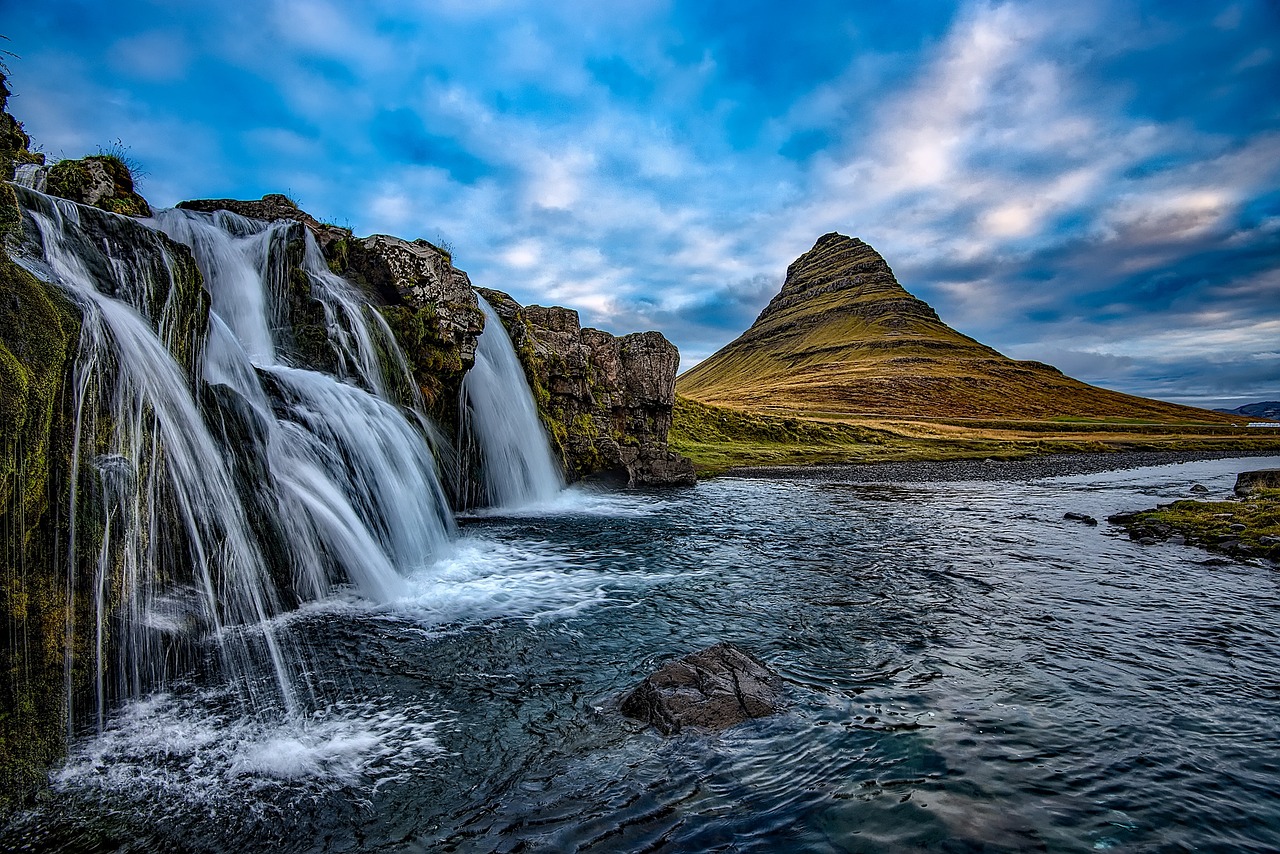
Chasing Waterfalls: Adventures in Iceland in 2024
Ah, Iceland, the land of fire and ice, where the waterfalls are as plentiful as the puffin sightings. If you’re planning an adventure in 2024, buckle up—this island is about to sweep you off your wooly socks! Whether you’re a foodie, a history buff, or just someone looking to enjoy breathtaking views with your loved ones, Iceland offers a unique blend of culture, cuisine, and countless waterfalls. Here’s your ultimate guide to navigating this stunning destination, with a sprinkle of humor to keep things as light as Icelandic skyr!
1. Waterfall Chasing:
Iceland is often called the land of waterfalls, and for good reason. Each waterfall has its own unique charm:
- Gullfoss (“Golden Falls”): This is one of Iceland’s most iconic and beautiful waterfalls. Located on the Hvítá river, the water plummets down in two stages into a rugged canyon, creating a spectacular mist and rainbows on sunny days. The power and beauty of Gullfoss are a testament to Iceland’s natural wonders.
- Dettifoss: Recognized as one of Europe’s most powerful waterfalls, Dettifoss is situated in Vatnajökull National Park in Northeast Iceland. The sheer volume of water thundering over the precipice is a sight to behold and is often enveloped by a dramatic spray, making it a photographer’s paradise.
- Seljalandsfoss: Famous for the path that runs behind the waterfall, allowing visitors to literally walk behind the cascade. This unique perspective provides not just stunning views but also the thrilling experience of hearing and feeling the power of the waterfall as you stand behind the falling water.
2. Geothermal Wonders:
Iceland’s volcanic activity fuels numerous geothermal sites:
- Blue Lagoon: Perhaps the most famous geothermal spa in Iceland, located in a lava field in Grindavík on the Reykjanes Peninsula. The warm waters are rich in minerals like silica and sulfur and bathing in the Blue Lagoon is reputed to help some people suffering from skin diseases. Besides the therapeutic benefits, the milky blue water set against a stark black lava field is visually stunning.
- Secret Lagoon: Located in the small village of Flúðir, this is one of the oldest natural geothermal pools in Iceland. It offers a more laid-back and authentic experience compared to the more commercial Blue Lagoon. The water stays at 38-40 Celsius year-round, making it a perfect relaxing spot after a day of exploring.
3. Glacier Tours:
Exploring Iceland’s glaciers offers an ice adventure like no other:
- Vatnajökull Glacier: This is not only the largest glacier in Iceland but also in Europe. Tours on Vatnajökull often involve ice cave exploration, where the beauty of the blue ice inside the caves is surreal and photogenic. It’s a stark reminder of the dynamic nature of Iceland’s landscape.
- Sólheimajökull Glacier: A part of the larger Mýrdalsjökull glacier, Sólheimajökull is accessible and offers guided hikes that provide insights into the fascinating world of glaciology. The rugged surface of the glacier, interspersed with crevasses and ice sculptures formed by wind and water, makes for a memorable adventure.
Each of these activities provides a deep connection with Iceland’s natural elements, blending the raw beauty and power of the landscape with unique experiences that are both awe-inspiring and humbling. Whether you’re standing behind a waterfall, bathing in geothermal waters, or walking atop a glacier, these experiences are quintessentially Icelandic and cater to the adventurous spirit of every visitor.
Family Adventures:
Iceland is not only a paradise for solo adventurers and couples but also an incredibly family-friendly destination. Here are some more details on the best family adventures in Iceland that promise fun, education, and excitement for all ages:
1. Puffin Watching:
Iceland is one of the best places in the world to watch puffins, especially during the summer months from April to August when they come ashore to breed. These colorful and charismatic birds can be seen in various parts of the country:
- Látrabjarg Cliff: Located in the Westfjords, it’s home to millions of birds, including a large puffin colony. The cliffs offer a safe environment for children to observe these birds as the puffins are not particularly shy and often approach close to the viewing areas.
- Vestmannaeyjar (Westman Islands): This small archipelago off the south coast of Iceland is another excellent location for puffin watching. Families can take a short ferry ride to the islands, where guided tours help you explore puffin habitats and learn more about their life cycle and habits.
2. Horseback Riding:
The Icelandic horse, a breed that has remained virtually unchanged since the Vikings brought it to Iceland, is known for its friendly demeanor and unique tölt gait, which is very smooth and comfortable for riders of all skill levels.
- Lava Fields Ride: Riding through the vast, open lava fields surrounding Reykjavik offers a surreal landscape that feels almost like another planet. These tours cater to all ages and provide a gentle, enjoyable ride.
- Beach and Countryside Rides: For those staying closer to the coastal areas, horseback riding along the beaches, with the North Atlantic winds in your hair, is an unforgettable experience. The rides often include a mix of beach and countryside, allowing families to see different aspects of Iceland’s natural beauty.
3. The Lava Center:
Situated in Hvolsvöllur, the Lava Center is an interactive museum that focuses on Iceland’s volcanic activity, the creation of Iceland over millions of years, and the earthquakes that have shaped the island. It’s educational and engaging for kids with:
- Interactive Exhibits: These include earthquake simulators, volcanic eruption simulations, and displays that show the movement of tectonic plates. Kids can learn through play, which helps them grasp complex geological processes in an enjoyable way.
- Cinematic Experiences: The center’s high-tech cinema screens documentaries that show real footage of eruptions and natural scenery, providing a cinematic experience that is both educational and thrilling.
These family-friendly activities not only cater to the interests of children but also provide safe and informative ways for the entire family to explore the natural beauty and unique ecological features of Iceland. They offer a perfect balance of adventure, education, and relaxation, ensuring that every family member comes away with memorable experiences and a deeper appreciation for nature’s wonders.
Romantic Getaways for Couples
Iceland offers a unique backdrop for romance, blending its dramatic landscapes with cozy, intimate experiences. For couples looking to spark or rekindle romance, here are some detailed ideas to consider:
1. Northern Lights Viewing
One of the most magical and romantic natural phenomena, the Aurora Borealis, or Northern Lights, can be seen in Iceland during the darker months from September to April. Here’s how to make this experience a romantic getaway:
- Private Tours: Book a private Northern Lights hunting tour. These tours often include a guide who takes you away from the city lights to spots known for their clear skies and good activity, enhancing the chance to witness this spectacular show.
- Lodging Choices: Consider staying in a remote lodge or a hotel with a Northern Lights wake-up service, where you can watch the auroras dance from the comfort of your bed or a private hot tub.
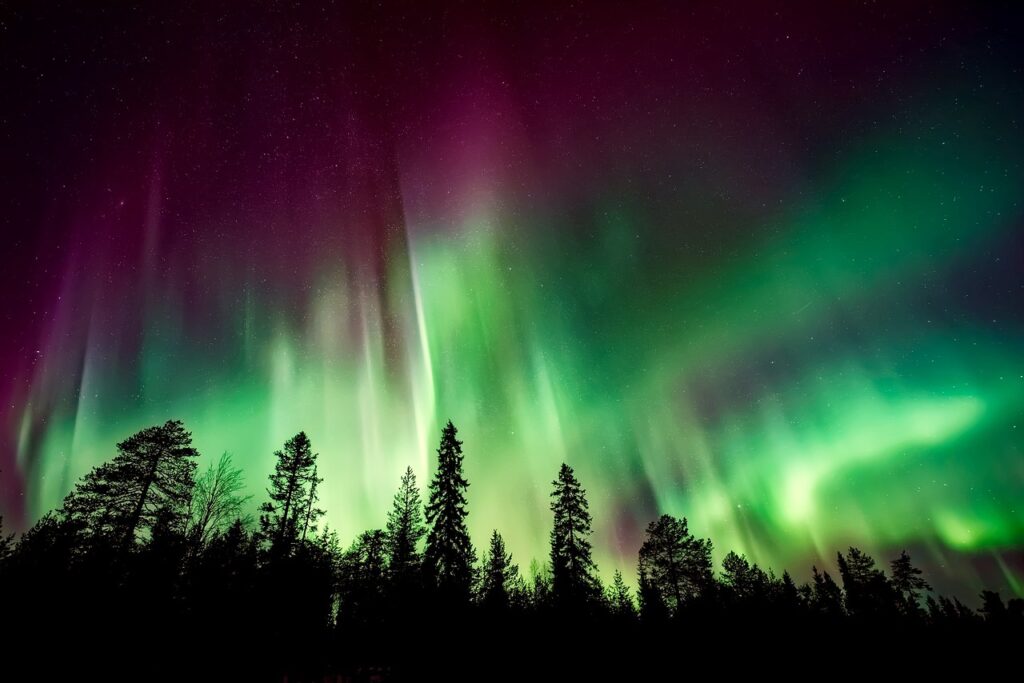
2. Wine and Dine in Reykjavik
Reykjavik may be small, but it’s mighty in its culinary offerings, providing an array of dining experiences that are perfect for a romantic evening:
- Gourmet Restaurants: For a sophisticated night out, visit restaurants like “Dill”, which has a focus on New Nordic cuisine and offers a tasting menu that reflects the seasonal and local ingredients of Iceland.
- Cozy Cafes: For a more laid-back atmosphere, Reykjavik’s cafes offer warm, intimate settings perfect for enjoying a hot chocolate or a locally brewed beer together. Spots like “Café Babalú” offer a quirky, colorful decor that invites couples to relax and chat for hours.
3. Hot Springs and Spa Days
Iceland’s abundant geothermal energy powers numerous hot springs and spas, providing a steamy, relaxing experience even in the midst of a snowy landscape:
- Sky Lagoon: Just outside Reykjavik, this new geothermal spa offers ocean views and a modern take on the traditional Icelandic bathing culture. Its infinity edge blends into the Atlantic, making it a stunning place to relax and reconnect.
- Myvatn Nature Baths: Located in the north of Iceland, these baths are less crowded than the Blue Lagoon but equally mesmerizing, set against a backdrop of volcanic landscapes. The mineral-rich waters are soothing, and winter visits could be rewarded with a Northern Lights display.
These romantic getaways offer a blend of awe-inspiring nature and cozy, intimate moments. Whether it’s watching the sky explode in color, savoring a meal prepared with the freshest ingredients, or soaking in geothermal waters as snow falls gently around you, Iceland provides a canvas for memorable moments that cater specifically to romance.
Cuisine: A Taste of Iceland:
Iceland’s cuisine is a direct reflection of its environment: pristine, straightforward, and influenced by the surrounding Arctic waters and volcanic landscape. Here’s a deeper dive into the tastes and culinary experiences that define Icelandic food culture:
Local Delicacies:
Iceland’s traditional dishes stem from a heritage of survival and making the most of local ingredients:
- Lamb: Icelandic lamb is renowned for its quality and flavor, a result of the sheep roaming free in the mountains, grazing on wild herbs and grasses. Dishes like Kjötsúpa, a hearty lamb soup filled with root vegetables, are a staple during the colder months.
- Fish and Seafood: With the Atlantic Ocean at its doorstep, Iceland excels in seafood. Cod, haddock, and Arctic char are commonly served, often simply grilled or baked. For a true taste of Iceland, try Hákarl (fermented shark), which is cured using a centuries-old method that turns the otherwise poisonous shark into a (strongly flavored) edible delicacy.
- Skyr: This thick, yogurt-like dairy product has been a part of Icelandic cuisine for over a thousand years. Rich in protein, Skyr is typically enjoyed with berries or honey as a breakfast dish or dessert.
Best Restaurants in Reykjavik:
Reykjavik might be small, but it’s packed with top-tier restaurants that offer both traditional and modern Icelandic cuisine:
- Dill Restaurant: The first Icelandic restaurant to receive a Michelin star, Dill showcases New Nordic cuisine with an emphasis on Iceland’s seasonal ingredients. The menu changes weekly but consistently features innovative, beautifully presented dishes.
- Bæjarins Beztu Pylsur: For a quick and quintessentially Icelandic meal, this famous hot dog stand in Reykjavik is a must-visit. Their lamb-based hot dogs come loaded with raw and crispy fried onions, ketchup, sweet mustard, and remoulade.
A Sweet Treat: Icelandic Ice Cream:
Despite Iceland’s cold climate, ice cream is a year-round treat loved by locals:
- Valdís: An ice cream shop in Reykjavik known for its creative flavors ranging from traditional vanilla and chocolate to Icelandic specialties like licorice and Skyr. It’s popular even in winter, demonstrating Icelanders’ deep love for this sweet treat.
- Ísbúð Vesturbæjar: Another beloved spot, known for its rich and creamy ice cream. It’s a perfect stop after a relaxing dip in the nearby Vesturbæjarlaug swimming pool.
Unique Beverages:
Icelandic drinks are as unique as their food, often made from local ingredients:
- Brennivín: Also known as “Black Death,” this is Iceland’s signature distilled beverage. Made from fermented potato mash and flavored with caraway, it’s traditionally consumed alongside hákarl.
- Icelandic Craft Beers: The craft beer scene in Iceland has exploded in recent years, with breweries like Borg and Einstök offering a range of styles from pale ales to porters, often incorporating local flavors such as birch, seaweed, and Arctic berries.
These culinary experiences provide a glimpse into Iceland’s culture through its use of local, often uniquely Icelandic ingredients that are both nourishing and a delight to the palate. Whether it’s the high-end dining of Reykjavik’s top restaurants or the simple pleasure of a late-night hot dog, Iceland’s cuisine offers a memorable part of any visit to the island.
The Rich History of Iceland:
Iceland’s history begins with its settlement by Norsemen, primarily from Norway, in the late 9th century AD:
- The Settlement Exhibition in Reykjavik: This museum is built around a longhouse from around 930 AD that was unearthed in central Reykjavik. It offers a glimpse into daily life during Iceland’s settlement period, showcasing artifacts that tell the story of early hardship, community, and adaptation.
- Viking Heritage: The spirit of the Vikings persists in modern Iceland and is celebrated through various festivals such as the Viking Festival at Hafnarfjörður, where history enthusiasts can experience Viking battles, crafts, and traditional foods.
Literary Tradition: Sagas and Eddas:
Iceland’s literary heritage is one of the richest in the world, with medieval texts that have preserved Nordic mythology and Viking history:
- The Sagas: These are narrative histories detailing the lives of Icelandic settlers in the 10th and 11th centuries. They blend historical fact with lore and legend, offering insights into the legal systems, societal structures, and personal vendettas of early Icelandic society.
- Snorri Sturluson’s Edda: Written in the 13th century, the Prose Edda is a source of much of what the modern world knows about Norse mythology. Snorri’s Edda and other literary works are accessible to the public in the Árni Magnússon Institute in Reykjavik.
Architecture and Historical Sites:
Icelandic architecture provides physical links to its history, from turf houses to modern structures inspired by natural elements:
- Turf Houses: Once a practical response to Iceland’s harsh climate and lack of wood, these houses are now symbols of the ingenuity of historical Icelandic architecture. The Skogar Folk Museum displays these traditional homes, giving visitors a real sense of historical Icelandic domestic life.
- Hallgrímskirkja: This iconic church in Reykjavik is a marvel of modern architecture inspired by Iceland’s natural landscapes, particularly the basalt lava flows seen around the country. Its design reflects both the natural beauty of Iceland and the innovative spirit of its people.
Christianization and its Impacts:
The adoption of Christianity in the year 1000 AD was a turning point in Icelandic culture:
- Þingvellir National Park: This UNESCO World Heritage Site is not only geologically significant but also historically, as it was here that the Alþingi, one of the world’s oldest parliamentary institutions, was established. It was also at Þingvellir that Iceland peacefully converted to Christianity, guided by the lawspeaker Þorgeir Ljósvetningagoði, who decided that the country would convert but allowed the continuation of private pagan practices to maintain peace.
Modern Historical Developments:
Moving into the 20th and 21st centuries, Iceland has navigated its path through independence and modernization:
- Independence from Denmark: Achieved in 1944 during World War II, this marked a significant turning point for Iceland, transitioning from a Danish dependency to a republic. The National Museum of Iceland in Reykjavik houses extensive exhibits on this period, showing how independence shaped modern Icelandic identity and governance.
Iceland’s history is deeply entwined with its dramatic landscapes and robust cultural traditions, making it a fascinating place for history buffs and casual travelers alike. The preservation of its historical sites and the reverence for its literary and architectural heritage allow visitors to step back in time and experience the rich tapestry of Icelandic history firsthand.
Trending in 2024:
As we look ahead to what’s trending in Iceland in 2024, several themes and developments are shaping the visitor experience, reflecting broader global trends in sustainability, technology, and cultural engagement. Here’s an in-depth look at what’s hot in Iceland this coming year:
Sustainable Travel:
Iceland has long been a pioneer in sustainable living, largely due to its reliance on renewable energy sources such as geothermal and hydroelectric power. In 2024, these practices are increasingly being integrated into the tourism sector:
- Carbon Neutral Accommodations: Many Icelandic hotels and lodges are moving towards carbon neutrality, employing energy-saving measures, sustainable building materials, and local food sourcing. This not only minimizes the ecological footprint but also enhances the authenticity of the travel experience.
- Eco-Friendly Tours: Tours that emphasize minimal environmental impact are becoming more popular. This includes everything from electric car rentals for self-guided tours to eco-friendly whale watching, where operators adhere to strict guidelines to avoid disturbing marine life.
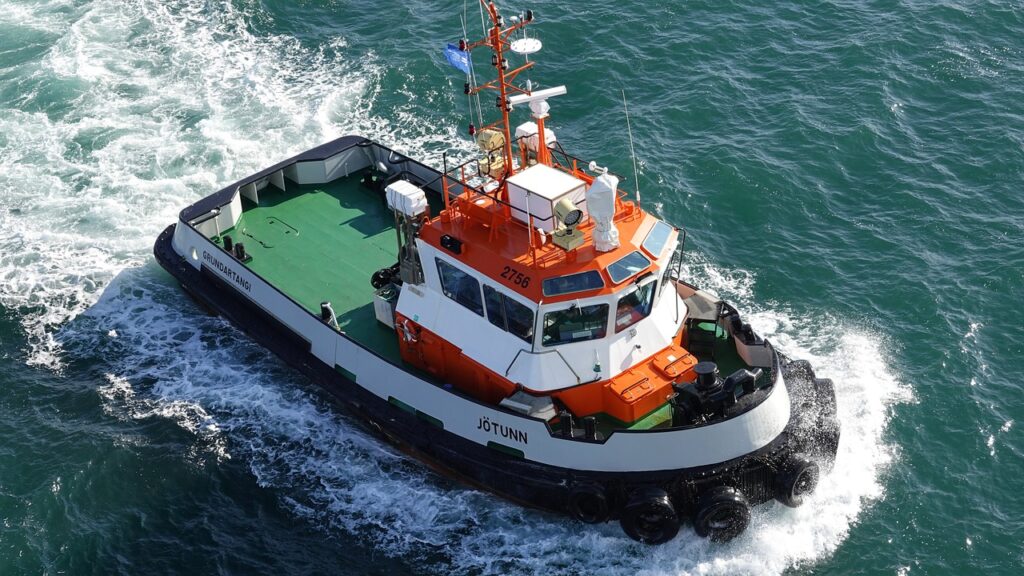
Tech and Innovation Tours:
Iceland’s status as a hub for innovation, particularly in the fields of energy and environmental technology, is drawing a new kind of traveler:
- Geothermal Energy Tours: These tours offer visitors insights into how Iceland harnesses its volcanic activity to produce sustainable energy. For example, the Hellisheiði Power Station, the third-largest geothermal power station in the world, offers guided tours that explain the process of converting geothermal power into electricity.
- Silicon Valley of the North: Reykjavik is emerging as a burgeoning tech startup ecosystem, dubbed the “Silicon Valley of the North.” Tech-focused visitors can engage with local innovators and entrepreneurs through workshops, meetups, and tours of tech companies.
Local Festivals:
Celebrating Icelandic culture and community through festivals is more vibrant than ever in 2024, with events that cater to a wide array of interests:
- Secret Solstice Festival: This music festival, held during the summer solstice when the sun never sets, features both local and international artists. The unique blend of music, nature, and 24-hour daylight provides a party experience unlike any other.
- Reykjavik Food and Fun Festival: This festival combines world-class cuisine with adventurous Icelandic activities. Chefs from around the world come to collaborate with Reykjavik’s restaurants to create new dishes, promoting both local ingredients and international flavors.
- Icelandic National Day (June 17): Celebrating the independence of Iceland from Denmark in 1944, this festival is marked by parades, dances, and cultural performances across the country, particularly vibrant in Reykjavik.
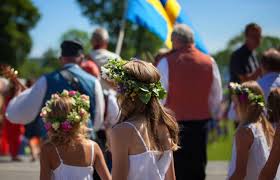
Wellness and Mindfulness:
As global interest in wellness continues to grow, Iceland’s offerings in this area are expanding:
- Nature Therapy: Leveraging its vast unspoiled landscapes, Iceland is promoting ‘nature therapy’—guided walks and hikes that focus on mindfulness and connecting with nature. These activities are designed to reduce stress and promote mental well-being.
- Wellness Retreats: Locations like the Blue Lagoon have expanded their services to include wellness retreats that offer spa treatments, yoga classes, and wellness seminars in breathtaking natural settings.
These trends in 2024 showcase Iceland’s commitment to sustainability, its celebration of local culture, and its integration of modern technology and innovation. These elements come together to offer a forward-thinking, enriching travel experience that resonates with the values and interests of today’s global traveler.
Transportation Tips:
Navigating Iceland can be as much an adventure as exploring its vast landscapes, with various transportation options tailored to different travel styles and preferences. Here’s a detailed guide to help you make the most of your journey around this stunning island in 2024:
Renting a Car:
For those who value flexibility and independence, renting a car is the best way to explore Iceland at your own pace:
- Types of Vehicles: Depending on your itinerary, you can choose from a variety of vehicles. For summer travel, a standard car will suffice for most routes. However, if you plan to explore the highlands or travel in winter, a 4×4 is essential due to rough terrain and snowy conditions.
- Driving Laws and Tips: Be aware of unique Icelandic driving laws, such as the requirement to keep headlights on at all times. Also, be cautious of rapidly changing weather conditions, and always check road.is for current road conditions. Note that off-road driving is strictly prohibited to protect the delicate natural environment.
Public Transport:
For those based in urban areas or those who prefer not to drive, public transport is a viable option:
- Buses: The bus system in Iceland connects most towns and cities, even reaching into some more remote areas. Reykjavik’s public transportation network, Strætó, offers extensive bus services within the city and to nearby towns. For more extensive travel, companies like Reykjavik Excursions and Sterna offer bus passes that cover various routes across the country.
- Scheduled Buses vs. Tour Buses: Scheduled buses are great for point-to-point travel, while tour buses offer direct routes to popular tourist sites with added comfort and guided commentary.
Internal Flights:
For those short on time or wishing to visit distant regions like North Iceland or the Westfjords, flying can significantly cut travel time:
- Domestic Airlines: Domestic flights are operated by airlines such as Air Iceland Connect and Eagle Air. Key airports include Reykjavik Domestic Airport, Akureyri, Egilsstaðir, and Ísafjörður.
- Efficiency and Scenic Views: Flights can be as short as 45 minutes, and often provide stunning aerial views of Iceland’s dramatic landscapes, including volcanic fields, rugged coastlines, and sprawling glaciers.
Ferries:
Travel by sea is another option, especially useful for reaching off-the-beaten-path destinations like the Westman Islands:
- Ferry Services: Companies like Herjólfur operate regular ferries to the Westman Islands, a must-visit for nature lovers and bird watchers. Additionally, ferries like Sæferdir connect to the remote Westfjords, offering both a scenic and practical transportation option.
- Practical Tips: Always check the weather and sea conditions before booking, as ferry schedules can be affected by adverse weather.
Biking:
For the eco-conscious and active travelers, biking is a fantastic way to see Iceland, especially during the milder summer months:
- Rental and Routes: Bike rentals are available in major towns and offer a healthy and intimate way to explore. Popular cycling routes include the Golden Circle and the coastal roads around Reykjavik.
These transportation options provide a comprehensive network allowing travelers to explore Iceland’s diverse landscapes and attractions effectively and enjoyably. Whether by land, air, or sea, each mode of transport offers its own unique perspective of this beautiful country.
Tips:
As you prepare for your Icelandic adventure in 2024, here are some final tips to ensure a smooth, enjoyable, and memorable experience:
1. Plan and Book in Advance
Iceland’s popularity as a travel destination means that accommodations, car rentals, and even some popular tours can book up quickly, especially during peak travel seasons (summer and early winter for Northern Lights viewing). Plan your itinerary and make reservations well in advance to avoid disappointment and to secure the best rates.
2. Be Weather-Wise:
Iceland’s weather is famously unpredictable. It’s not unusual to experience all four seasons in one day. Always dress in layers, and be sure to pack waterproof and windproof jackets regardless of the season. Sturdy hiking shoes are a must if you plan to explore Iceland’s rugged terrain.
3. Respect Local Customs and Nature:
Iceland is proud of its pristine natural environments and rich cultural heritage. Always stick to marked paths when hiking to avoid damaging fragile ecosystems. Familiarize yourself with local customs and traditions to show respect during your visit. For instance, always shower without a swimsuit before entering public pools or hot springs, as is the local custom for cleanliness.
4. Use the Appropriate Apps:
Several apps can greatly enhance your travel experience in Iceland. Consider downloading:
- Weather: The Icelandic Meteorological Office provides a reliable app for weather forecasts crucial for planning any outdoor activities.
- Safe Travel: The official app from Iceland’s Search and Rescue Association includes travel alerts, driving conditions, and an option to leave your travel plan in case of emergencies.
5. Embrace Icelandic Cuisine:
Don’t miss out on trying local Icelandic foods, which are an integral part of the travel experience. Even if some dishes might seem unconventional, like hákarl (fermented shark), giving them a try can lead to a more authentic understanding of the culture.
6. Sustainability is Key:
Remember, sustainable travel practices help preserve the very sights you’ve come to see. Opt for eco-friendly tours, minimize plastic use, and consider offsetting your carbon footprint. Engaging in responsible tourism ensures that Iceland remains beautiful and vibrant for future generations.
7. Stay Connected:
While Iceland offers a great escape, staying connected for safety and convenience is wise. Most areas, especially towns and tourist spots, have good cellular coverage. Prepaid SIM cards are widely available and offer affordable data plans.
8. Currency and Payments:
The Icelandic króna (ISK) is the local currency, but credit cards are accepted almost universally. Carrying a small amount of cash can be helpful for smaller purchases where cards might not be accepted, like in some buses or remote areas.
By keeping these tips in mind, you’re all set for a fantastic trip to Iceland. Prepare to be awed by the landscapes, enriched by the culture, and invigorated by the adventure that awaits in this extraordinary land of fire and ice. Safe travels!
As you gear up for your 2024 adventure to Iceland, you’re not just planning a vacation; you’re preparing for an experience of a lifetime in a land where nature’s forces have sculpted a landscape of stark beauty and raw power. From the mesmerizing dance of the Northern Lights to the imposing presence of glaciers and volcanoes, Iceland offers a unique blend of outdoor excitement and cultural richness.
Here are a few final pointers to make your journey unforgettable:
- Advance Planning: Essential for snagging the best spots in popular locales, especially during peak seasons.
- Weather Prep: The climate can be unpredictable, so pack for all conditions and always layer up.
- Cultural Respect: Engage with the local culture and traditions with sensitivity and awareness.
- Sustainability Focus: Travel responsibly to help preserve Iceland’s pristine environments for years to come.
- Embrace Local Cuisine: Dive into the culinary scene and try something out of the ordinary.
- Stay Safe and Informed: Use helpful apps and services to enhance and secure your travel experience.
Each moment in Iceland, whether it’s spent in the quiet reflection of a hot spring or in the heart-pounding thrill of exploring a lava tube, is an opportunity to connect with nature in ways that are profound and personal. Carry these tips in your travel bag, and you’re ready to capture the spirit of Iceland, making your trip not just a journey through a place, but a voyage into the heart of one of the world’s most extraordinary islands. Enjoy your travels!

